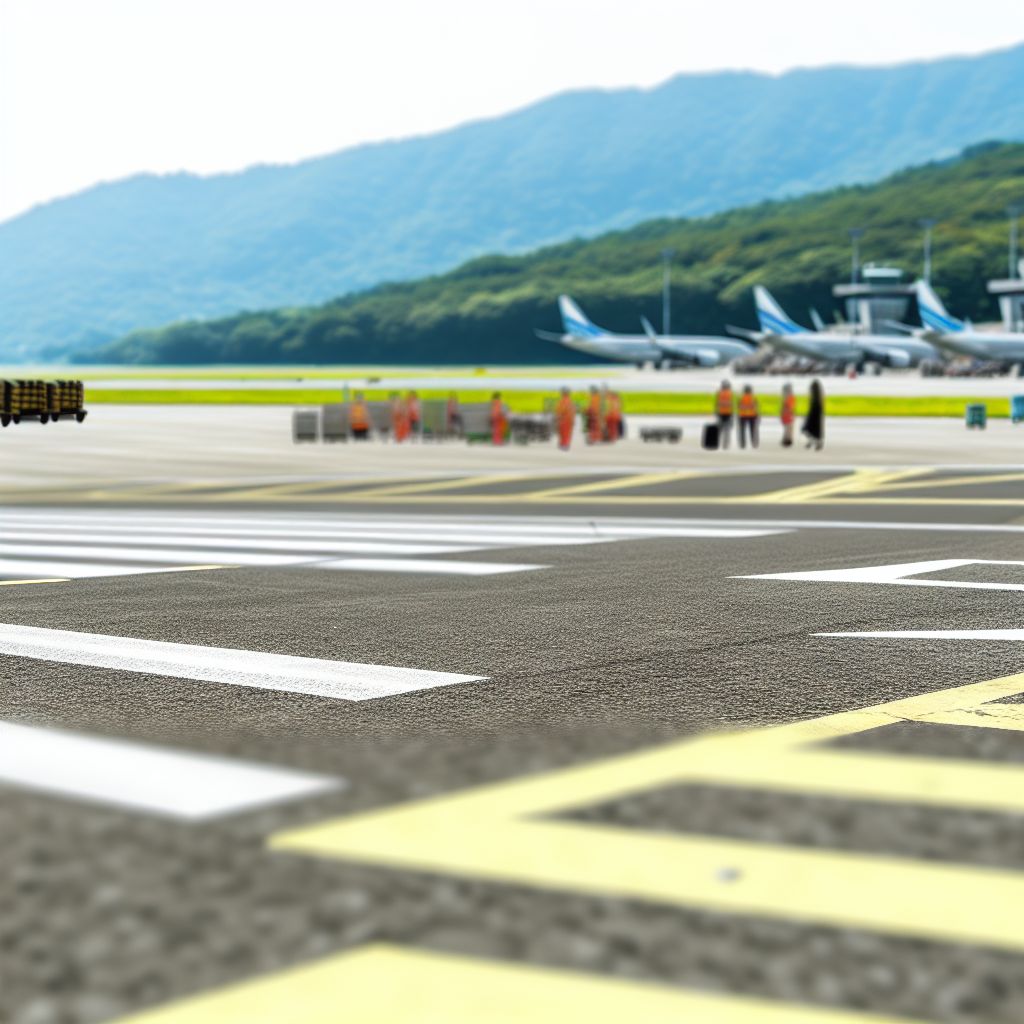Deutsch: Landebahn / Español: Pista de aterrizaje / Português: Pista de decolagem / Français: Piste d'atterrissage / Italiano: Pista di atterraggio
A runway in the travel context refers to a defined, level area on an airport's grounds that is specifically designed for aircraft to land on and take off from. Typically made of asphalt or concrete, runways must meet rigorous construction and maintenance standards to ensure the safety and efficiency of air travel. The dimensions of a runway, including its length and width, are determined based on the types and sizes of aircraft that use it, with larger airports accommodating wide-body international flights requiring longer runways.
Description

Runways are a critical component of airport infrastructure, facilitating the beginning and end of most air travel journeys. Each runway is identified by a number between 01 and 36, which corresponds to its orientation in degrees relative to magnetic north, divided by 10 and rounded to the nearest whole number. This numbering system helps pilots to identify runways during landing and takeoff procedures. In addition to the numerical designation, runways may have a letter suffix (L, R, C) indicating their position (Left, Right, Center) when parallel runways exist.
The construction and maintenance of runways are subject to international standards, governed by bodies such as the International Civil Aviation Organization (ICAO). These standards ensure that runways can safely accommodate the aircraft that use them, considering factors like weight limits and required lengths for takeoff and landing.
Application Areas
Runways are an essential feature of both civil and military airports worldwide, serving a variety of aircraft, including:
- Commercial Airliners: For both domestic and international flights, requiring varying runway lengths based on aircraft size and range.
- Private Jets: Smaller, often requiring shorter runways.
- Cargo Planes: Large aircraft with significant weight, necessitating longer and stronger runways.
- Military Aircraft: Including fighters and large transport planes, with specific requirements depending on their design and purpose.
Well-Known Examples
Certain airports are renowned for their runways, either due to length, location, or engineering feats, such as:
- Kansai International Airport, Japan: Famous for its runway built on an artificial island.
- Lukla Airport, Nepal: Known for its short runway and challenging approach through mountainous terrain.
- Denver International Airport, USA: Has one of the longest public runways in the United States.
Treatment and Risks
The design, construction, and maintenance of runways involve careful consideration of various risks, including environmental conditions (such as ice, snow, and Water pooling), wear and tear from use, and potential obstacles or hazards in the approach and departure paths. Airports employ a range of maintenance and monitoring activities to manage these risks, including regular inspections, repaving, and the installation of advanced lighting and navigational aids to assist with takeoffs and landings in poor visibility conditions.
Similar Terms or Synonyms
- Airstrip
- Landing Strip
- Airfield
Weblinks
- fashion-glossary.com: 'Runway' in the fashion-glossary.com
- space-glossary.com: 'Runway' in the space-glossary.com
Summary
In the travel context, a runway is a vital piece of airport infrastructure, designed to accommodate the landing and takeoff of aircraft. These surfaces are meticulously planned and maintained to meet international safety standards, supporting a wide range of air travel activities. The importance of runways extends beyond their physical characteristics, encompassing the safety, efficiency, and Connectivity of global air travel.
--
Related Articles to the term 'Runway' | |
| 'Slot' | ■■■■■■■■■■ |
| A slot in the travel context typically refers to a scheduled time allocated for an aircraft to take off . . . Read More | |
| 'Landing' | ■■■■■■■■■■ |
| Landing is the last part of a flight, where a flying animal, aircraft, or spacecraft returns to the ground. . . . Read More | |
| 'Steward' | ■■■■■■■■■ |
| Steward: A steward in the travel context primarily refers to a flight attendant, a professional responsible . . . Read More | |
| 'Oceanview' | ■■■■■■■■■ |
| Oceanview is a desirable feature in the travel context, typically referring to accommodations such as . . . Read More | |
| 'Centre' | ■■■■■■■■ |
| Centre: In the context of travel, transport, and hotels, the term \'centre\' (also spelled in American . . . Read More | |
| 'Transport' | ■■■■■■■■ |
| \'Transport\' refers to the various modes of transportation used to move people or goods from one place . . . Read More | |
| 'Congo' | ■■■■■■■■ |
| In the travel context, \'Congo\' generally refers to the two countries located in Central Africa: the . . . Read More | |
| 'Columbus' | ■■■■■■■■ |
| In the travel context, \'Columbus\' refers to various destinations, attractions, and landmarks named . . . Read More | |
| 'Inclusive' | ■■■■■■■■ |
| In the travel context, \'inclusive\' refers to a type of travel package or experience that includes a . . . Read More | |
| 'Maintenance' | ■■■■■■■■ |
| \'Maintenance\' refers to the regular upkeep, repair, and servicing of various components, facilities, . . . Read More | |
